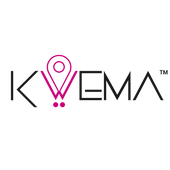Kwema is a Swahili word that means “I’m safe” “I’m fine”, and also is like asking ``are you ok? This is exactly the feeling we want to spread to every workplace and culture of safety collaboration we encourage with our technology.
Due to the current situation we are living and the effects of COVID-19, workplace safety has become one of the most relevant issues in every industry. According to a study done by the Washingtons University, 75% of american employees can’t work exclusively from home. Industries such as healthcare, education, policing, construction, farming and services are activities that partly rely on interacting with people, making these workers at higher risk.
However, each workplace has had different challenges regarding safety even before the pandemic. Everyday, employees are exposed to different types of hazards at the workplace.
These are commonly classified in four categories:
- Chemical: the exposition to substances resulting in physical and health harms like skin and respiratory irritation, corrosions, explosions, and more.
- Biological: include exposure to harm or disease resulting from viruses, bacterias, animals, insects, etc.
- Physical: the environmental factors that can harm employees without necessarily touching them such as extreme temperatures, noise, radiation, vibrations.
- Ergonomics: the physical factors due to body positions or the type of work and its conditions.
- Psychological: hazards that affect employee’ mental health and well-being, commonly associated with workload demands, workplace violence, stress, sexual harassment, and more.
The importance of emergency response and identification of potential hazards
When it comes to responding during an emergency at work, time is crucial because there is a huge gap between prevention and experiencing a work fatality. As we have discussed before, not only are safety procedures important to prevent work incidents but also they impact businesses economically and the way employees are engaged with the company.
On the other hand, COVID-19 has become an additional hazard in the workplace. Given the nature of the virus, determining if an employee contracts COVID-19 at the workplace as well as preventing potential virus transmissions among employees can be difficult.
For these reasons, we believe that every workplace must be prepared to handle any kind of hazard, and have the best safety practices and resources to ensure a safe and healthy place that your organization deserves.
How Kwema helps to keep your employees safe
Kwema’s safety wearables can quickly activate an emergency protocol, maximizing response time and containing any escalation. In just 3 seconds, employees can ask for help alerting safety supervisors and 911 when they are in danger.
Another great advantage of Kwema technology is the variety of options you can choose according to your workplace needs. Moreover, our wearables can be placed in things that your employees already wear such as badge holders, making their adoption easy and avoiding training costs.
Recently, we have integrated Contact Tracing functionality that helps to prevent potential COVID-19 outbreaks at workplaces and puts employee’s privacy first. If someone is diagnosed positive for COVID-19, our technology allows you to trace where the employee was, identify who they may have come into contact with and classify all employees into 3 groups of risk and take action to prevent spread.
Contact us at partners@kwema.co for a Free Assessment to simultaneously mitigate as many safety risks at your workplace.
Photo by LinkedIn Sales Navigator on Unsplash
